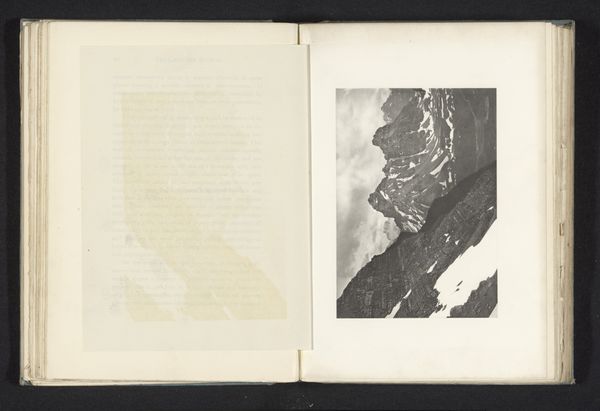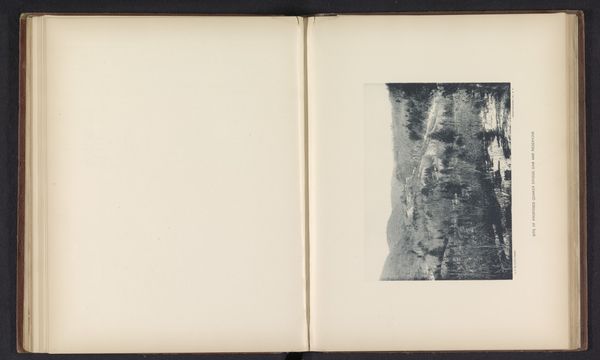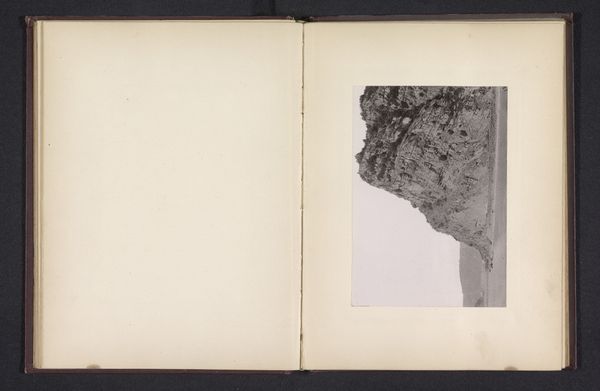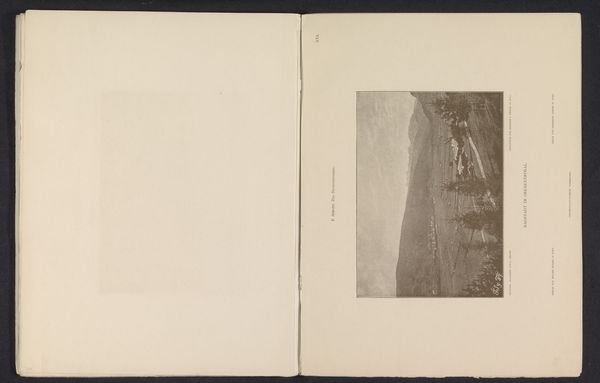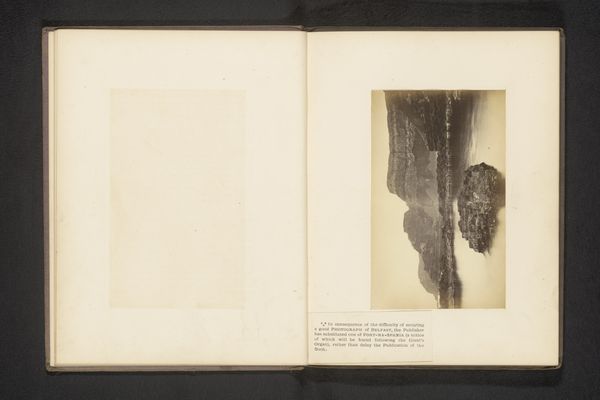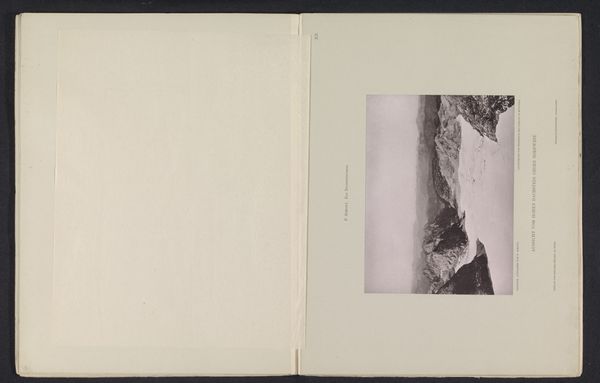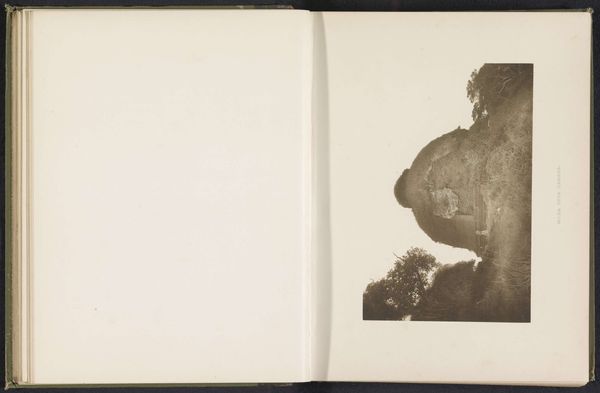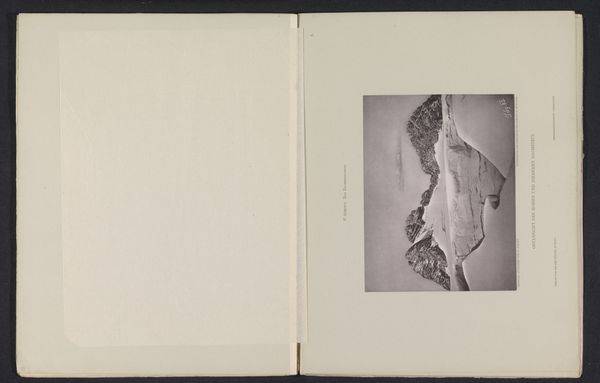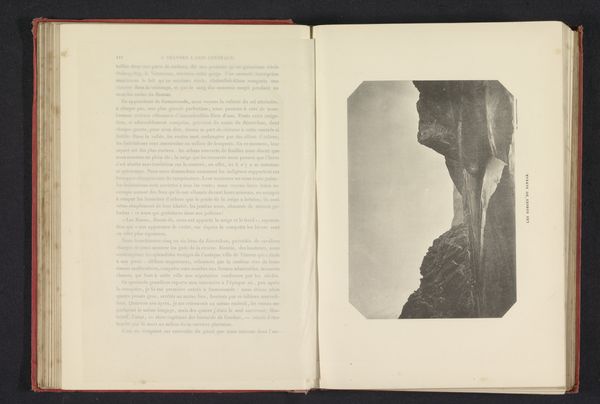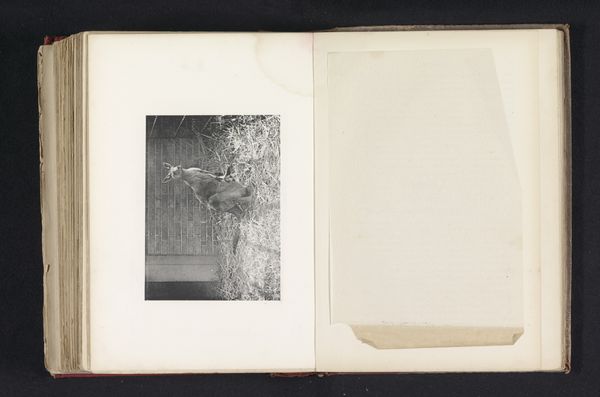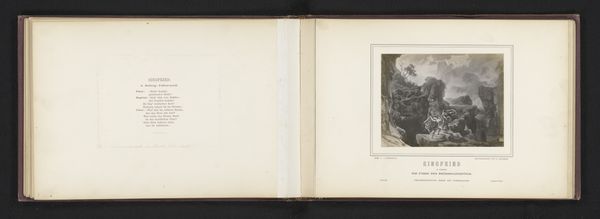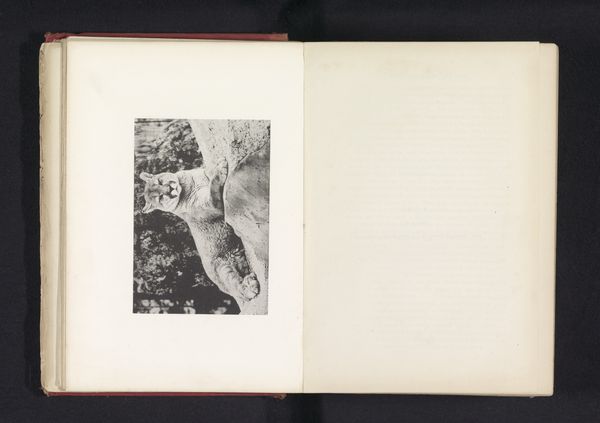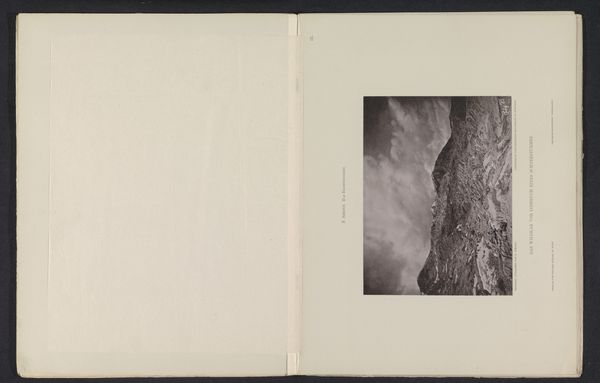
#
aged paper
#
homemade paper
#
ink paper printed
#
sketch book
#
hand drawn type
#
personal sketchbook
#
hand-drawn typeface
#
thick font
#
sketchbook drawing
#
sketchbook art
Dimensions: height 159 mm, width 200 mm
Copyright: Rijks Museum: Open Domain
Curator: Here we have Friedrich Simony’s “Gezicht op een bergtop in het Dachsteingebergte” from 1886. What’s your initial take on this open sketchbook page? Editor: Stark and beautiful. The monochromatic palette gives it a feeling of age, almost like a faded photograph capturing a primordial landscape. There’s a deliberate texture in the paper itself. Curator: Indeed. Simony was fascinated by the Dachstein Mountains. His detailed renderings played a role in shaping the public’s understanding and appreciation of these Alpine regions during the late 19th century. The artwork even feels like a historical document of sorts. Editor: It makes me consider the material conditions. The homemade paper, the ink…these aren't just neutral supports. They represent Simony’s resourcefulness and reflect a pre-industrial, direct relationship to materials. Was he grinding his own pigments? Curator: It's possible, though further research would be needed to verify Simony’s artistic process in full. What is clear, though, is the sketchbook served as a tool for documentation as well as artistic expression. He produced numerous such works across the alpine regions. Editor: I imagine him out there, braving the elements to capture this specific view. The physical labor involved in creating art, especially in challenging environments, often goes unnoticed. This image pulls that process to the forefront for me. Curator: Absolutely, and we must recognize the power that art, particularly landscape art, has in shaping perceptions of the environment, not always for the betterment of conservation. Editor: It gives me chills to think that Simony’s depiction could inadvertently drive further commercialization of these mountain regions that might harm the natural processes. Curator: Well, that highlights the complicated relationship between art, representation, and environmental policy. It reminds us of art’s social responsibilities in visualizing and safeguarding landscapes. Editor: Exactly. Looking closer at the hand-drawn typography, I’m wondering about its readability within a mass-produced context. Is this typeface exclusive to him, and who exactly were the people engaging with this printed image? Curator: Fascinating considerations about accessibility, to say the least. Perhaps if anything, his artistry is preserved through printed reproductions like the image that we have before us, enabling further dissemination to wider audiences. Editor: An essential perspective that shows how our discussion could potentially challenge traditional separations between artisanal workmanship, technological change and consumption. Curator: Very insightful.
Comments
No comments
Be the first to comment and join the conversation on the ultimate creative platform.
